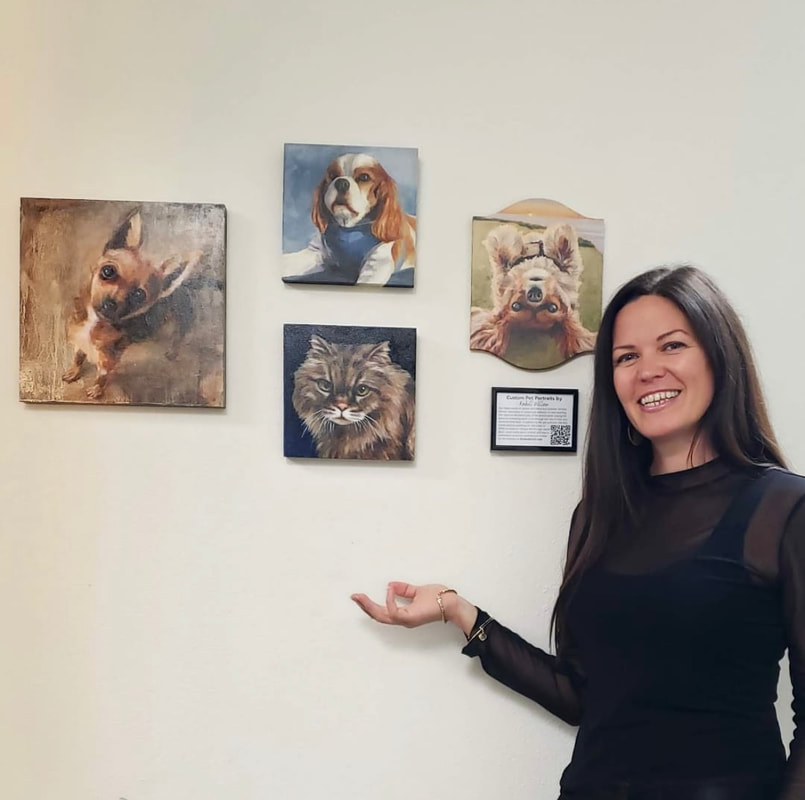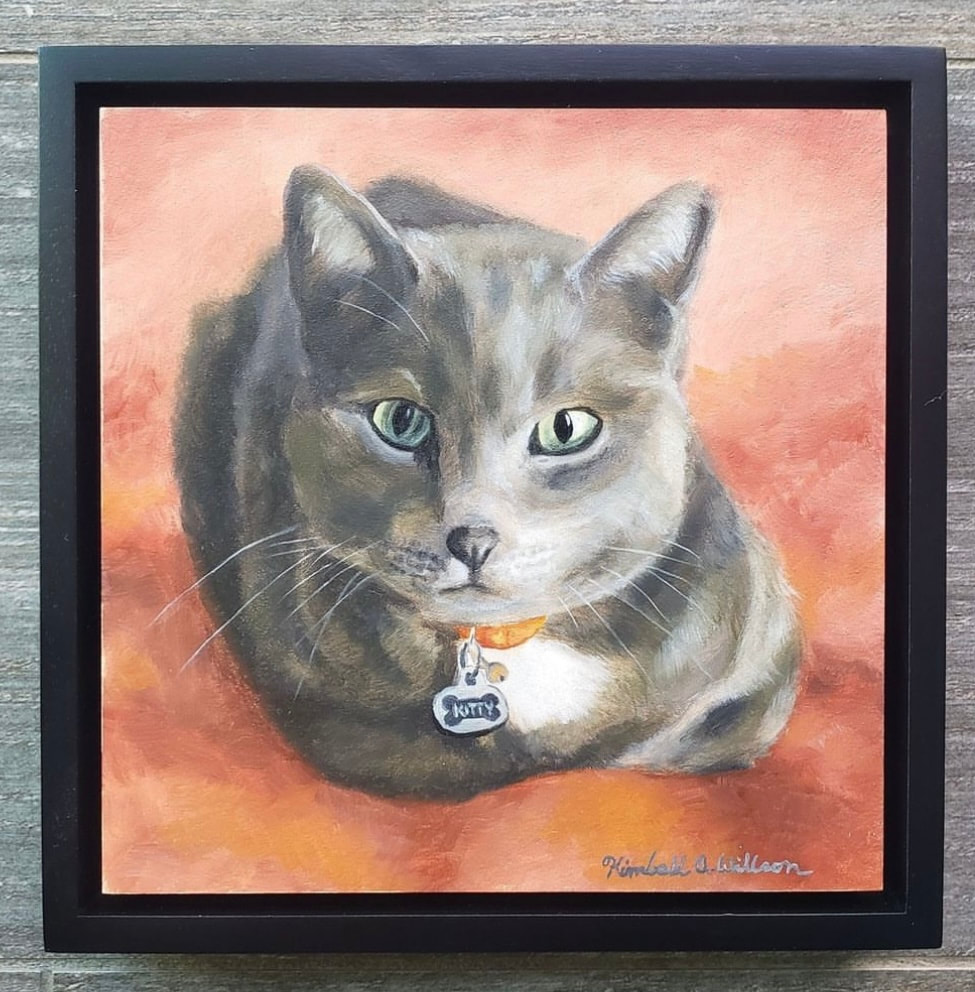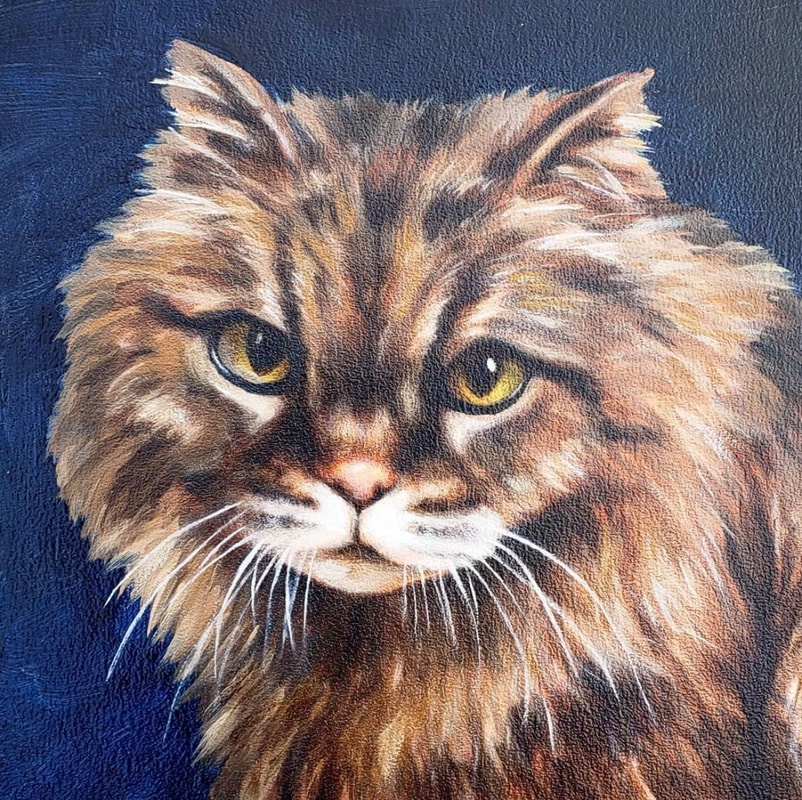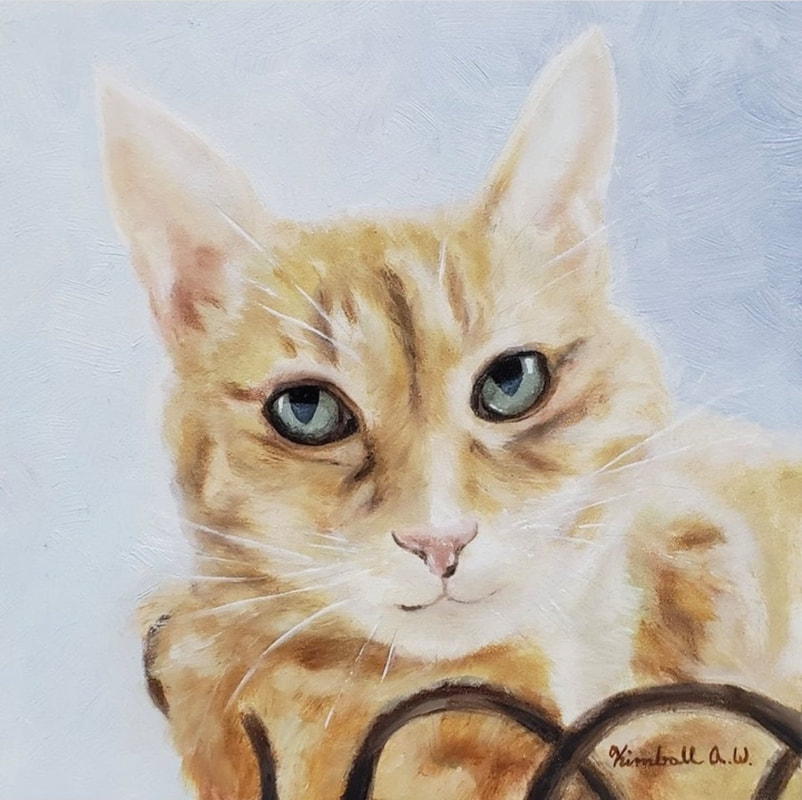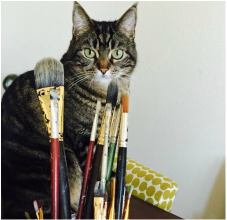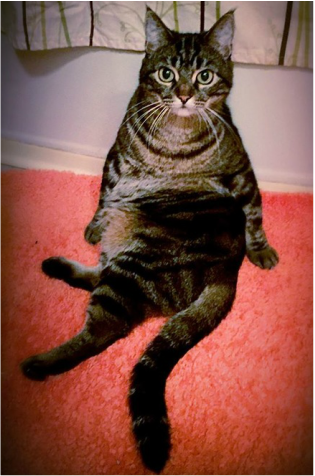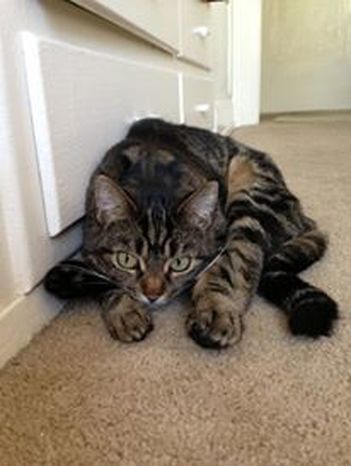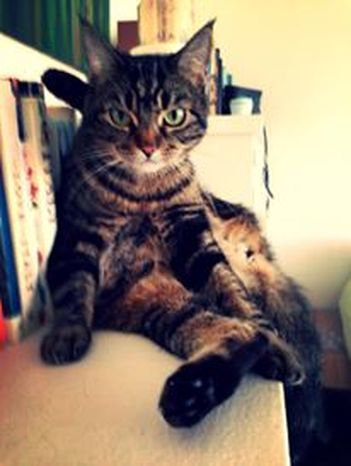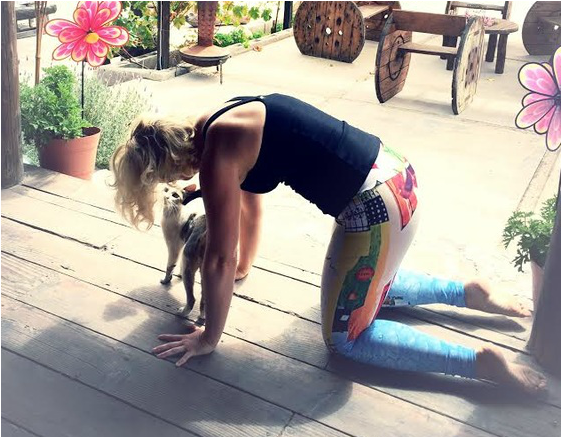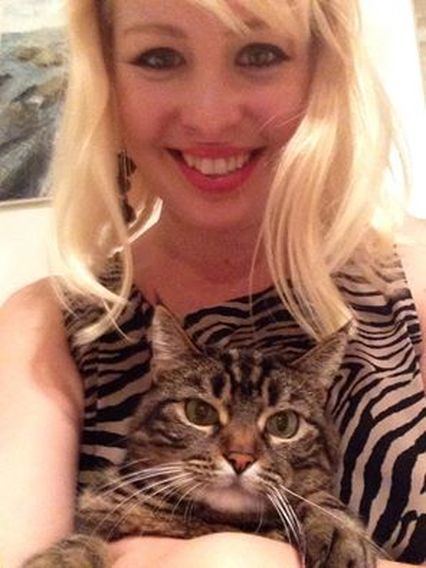"I have lived with many Zen masters...
All of them cats."
-Ekhart Tolle
KIMBALL WILLSON
is a local San Diego artist and yogi
who paints beautiful commissioned pet portraits
capturing the personality of each creature.
is a local San Diego artist and yogi
who paints beautiful commissioned pet portraits
capturing the personality of each creature.
Would you like to gift a pet portrait
to a dear friend or loved one for the holidays?
to a dear friend or loved one for the holidays?
Follow @ArtbyKimball on Instagram
Many of her posts also come with a heart warming story.
My cat, Kiki
Cat Yoga
Cats are excellent yogis because they listen to their bodies. When they wake from a nap, they immediately stretch out with a twist, forward fold, or even a Downward Facing Dog Pose. This keeps them supple and flexible.
Cats even have their own pose in most yoga sequences, Marjaryasana.
In this posture, we begin by kneeling, aligning our knees under our hips and our wrists under our shoulders. This position strengthens our wrists. If your knee caps hurt, you can fold your mat or place a firm blanket under your knees. The best way to practice cat is in conjuction with cow, so that we can undulate our spine, alternately opening our front and back sides.
As we inhale into cow, Bitilasana in Sanskrit, we drop our belly towards the earth and lift our shoulder blades back and behind, reaching our ears away from the shoulders and lift our head. As we exhale into cat, we gently round our spine, leading our chin towards our chest, and lifting our belly up to the sky. Sending our tailbone down as we press the ground away, I like to press my untucked toenails into the earth for more grounding stability.
This flow stimulates the nervous function, improves spinal mobility and massages our abdominal organs. Undulation is just the right amount of movement to nourish discs and ligaments. Our spinal discs depend on gentle movements to stay healthy. Fluid filled discs provide cushion between the vertebrae, which can shrink and bulge when not in optimal condition.
Coordinating this movement with your breathing relieves stress and calms the mind. I like to practice at least 5 full breaths each time I do these poses, encouraging the breath to become slow and deep. This sequence also helps to develop posture awareness and balance.
In this posture, we begin by kneeling, aligning our knees under our hips and our wrists under our shoulders. This position strengthens our wrists. If your knee caps hurt, you can fold your mat or place a firm blanket under your knees. The best way to practice cat is in conjuction with cow, so that we can undulate our spine, alternately opening our front and back sides.
As we inhale into cow, Bitilasana in Sanskrit, we drop our belly towards the earth and lift our shoulder blades back and behind, reaching our ears away from the shoulders and lift our head. As we exhale into cat, we gently round our spine, leading our chin towards our chest, and lifting our belly up to the sky. Sending our tailbone down as we press the ground away, I like to press my untucked toenails into the earth for more grounding stability.
This flow stimulates the nervous function, improves spinal mobility and massages our abdominal organs. Undulation is just the right amount of movement to nourish discs and ligaments. Our spinal discs depend on gentle movements to stay healthy. Fluid filled discs provide cushion between the vertebrae, which can shrink and bulge when not in optimal condition.
Coordinating this movement with your breathing relieves stress and calms the mind. I like to practice at least 5 full breaths each time I do these poses, encouraging the breath to become slow and deep. This sequence also helps to develop posture awareness and balance.
